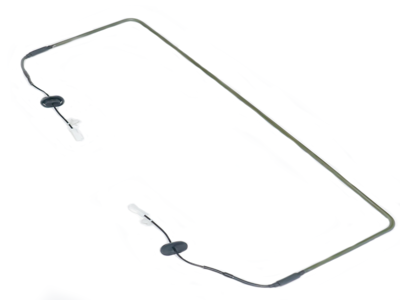

В современном мире, где технологии стремительно развиваются, водяные конденсаторы играют ключевую роль в различных промышленных и бытовых системах. Эти устройства, основанные на принципах теплообмена, позволяют эффективно управлять температурными режимами, что особенно важно в контексте энергосбережения и экологической устойчивости. В этой статье мы подробно рассмотрим, что такое водяной конденсатор, как он работает, его типы, применение, а также обсудим преимущества и недостатки. Цель – предоставить читателю исчерпывающую информацию, которая поможет лучше понять эту важную технологию и её значение в нашей повседневной жизни.
Водяной конденсатор – это теплообменное устройство, предназначенное для конденсации пара или газообразных веществ в жидкость с использованием воды в качестве охлаждающей среды. Конденсация – это процесс перехода вещества из газообразного состояния в жидкое, который сопровождается выделением тепла. Водяные конденсаторы широко применяются в системах охлаждения, таких как холодильные установки, кондиционеры, теплоэлектростанции и химические производства. Основная функция конденсатора – отвод тепла от конденсируемого вещества, что позволяет поддерживать оптимальные температурные условия в системе.
Исторически, конденсаторы появились ещё в XIX веке с развитием паровых машин, но современные водяные конденсаторы эволюционировали в высокотехнологичные устройства, способные работать в экстремальных условиях. Они могут быть частью замкнутого цикла, где вода циркулирует и repeatedly используется, или открытого цикла, где вода поступает из внешних источников, таких как реки или озера. Это делает их универсальными и адаптируемыми к различным application.
Принцип работы водяного конденсатора основан на законах термодинамики, specifically на процессе теплообмена. Когда горячий пар или газ поступает в конденсатор, он контактирует с охлаждающей водой, которая поглощает тепло, вызывая конденсацию. Этот процесс можно разделить на несколько этапов:
Эффективность этого процесса зависит от нескольких факторов, including the temperature difference between the vapor and water, the flow rate of water, and the design of the condenser. For example, in a shell-and-tube condenser, vapor flows around tubes through which water is pumped, maximizing surface area for heat exchange. This design ensures rapid and efficient condensation, which is critical for systems like power plants where every joule of energy matters.
В более сложных системах, водяные конденсаторы могут incorporate additional features such as fans for air cooling or heat exchangers for energy recovery. This not only improves performance but also reduces energy consumption, aligning with modern trends towards sustainability. Understanding these principles is essential for engineers and technicians working in fields like HVAC (heating, ventilation, and air conditioning) or industrial processing.
Водяные конденсаторы можно классифицировать по various criteria, such as design, application, and cooling method. Here are some common types:
Each type has its pros and cons. For instance, tubular condensers are durable but can be expensive to maintain, while plate condensers are cost-effective but may have lower capacity. The choice depends on factors like operating conditions, cost constraints, and environmental considerations. In recent years, advancements in materials science have led to the development of corrosion-resistant alloys and coatings, extending the lifespan of condensers and reducing maintenance needs.
Водяные конденсаторы находят применение в numerous industries, highlighting their versatility and importance. Some key areas include:
These applications demonstrate how водяные конденсаторы are integral to modern infrastructure. For example, in data centers, where cooling is critical for server performance, efficient condensers prevent overheating and ensure reliability. As technology advances, we see emerging uses in renewable energy systems, such as geothermal or solar thermal plants, where condensers adapt to harness natural resources sustainably.
Как и любая технология, водяные конденсаторы имеют свои strengths and weaknesses. Understanding these can help in making informed decisions for specific applications.
Преимущества:
Недостатки:
Despite these challenges, ongoing research focuses on mitigating drawbacks. For instance, closed-loop systems with treated water minimize environmental impact, while innovations like nano-coated surfaces reduce fouling. In the context of climate change, the shift towards water-efficient designs is becoming increasingly important.
Водяные конденсаторы continuously evolve to meet the demands of efficiency and sustainability. Current trends include:
These innovations are driven by global efforts to combat climate change and enhance resource efficiency. For example, in the automotive industry, advanced condensers in electric vehicles help manage battery temperature, extending range and lifespan. As we move towards a greener future, водяные конденсаторы will play a pivotal role in enabling sustainable industrial practices.
В заключение, водяной конденсатор – это фундаментальное устройство в области теплообмена, которое находит广泛应用 в различных отраслях. Его принцип работы, основанный на конденсации с использованием воды, обеспечивает高效ность и надежность, но также presents challenges related to water usage and maintenance. Понимание типов, применения, преимуществ и недостатков позволяет optimize their use and contribute to technological progress. С современными инновациями, такими как интеграция с renewable energy и smart technologies, будущее водяных конденсаторов looks promising for achieving greater sustainability and efficiency. Whether in power plants, refrigeration, or everyday appliances, these devices remain indispensable in our quest for a balanced and energy-conscious world.
Надеюсь, эта статья provided valuable insights into водяные конденсаторы. For further learning, consider exploring technical manuals or consulting with experts in the field. Спасибо за чтение!